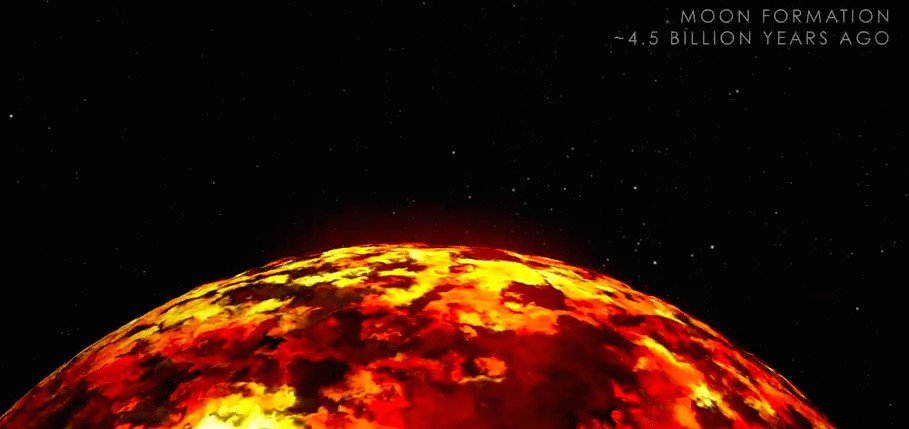
Jan. 15, 2018
Research Highlight
Loss of Volatile Elements in Planetary Magma Oceans

What the Moon may have looked like with an early magma ocean.Image credit: NASA/SVS/GSFC.
A recent study examines the loss of volatile elements during magma ocean phases on planetary bodies. The work compares zinc (Zn) in basalts from the Earth and Moon. Zn is a a useful tracer for volatile elements because its abundance tends to be elevated in basalts on Earth. Concentrations of Zn in lunar basalts can be 50 times less than the average terrestrial concentrations.
The low concentrations of Zn on the Moon have previously been attributed to evaporative loss, either during the Moon-forming Giant Impact, or during the lunar magma ocean (LMO) phase. The study focuses on the LMO hypothesis, and provides data that could be useful in a more general understanding of how outgassing during magma ocean phases on planetary bodies helps set the volatile inventory of planets.
The study, “Volatile element loss during planetary magma ocean phases,” was published in the journal Icarus. This work was supported by the Emerging Worlds Program. NASA Astrobiology provides resources for Emerging Worlds and other Research and Analysis programs within the NASA Science Mission Directorate (SMD) that solicit proposals relevant to astrobiology research.